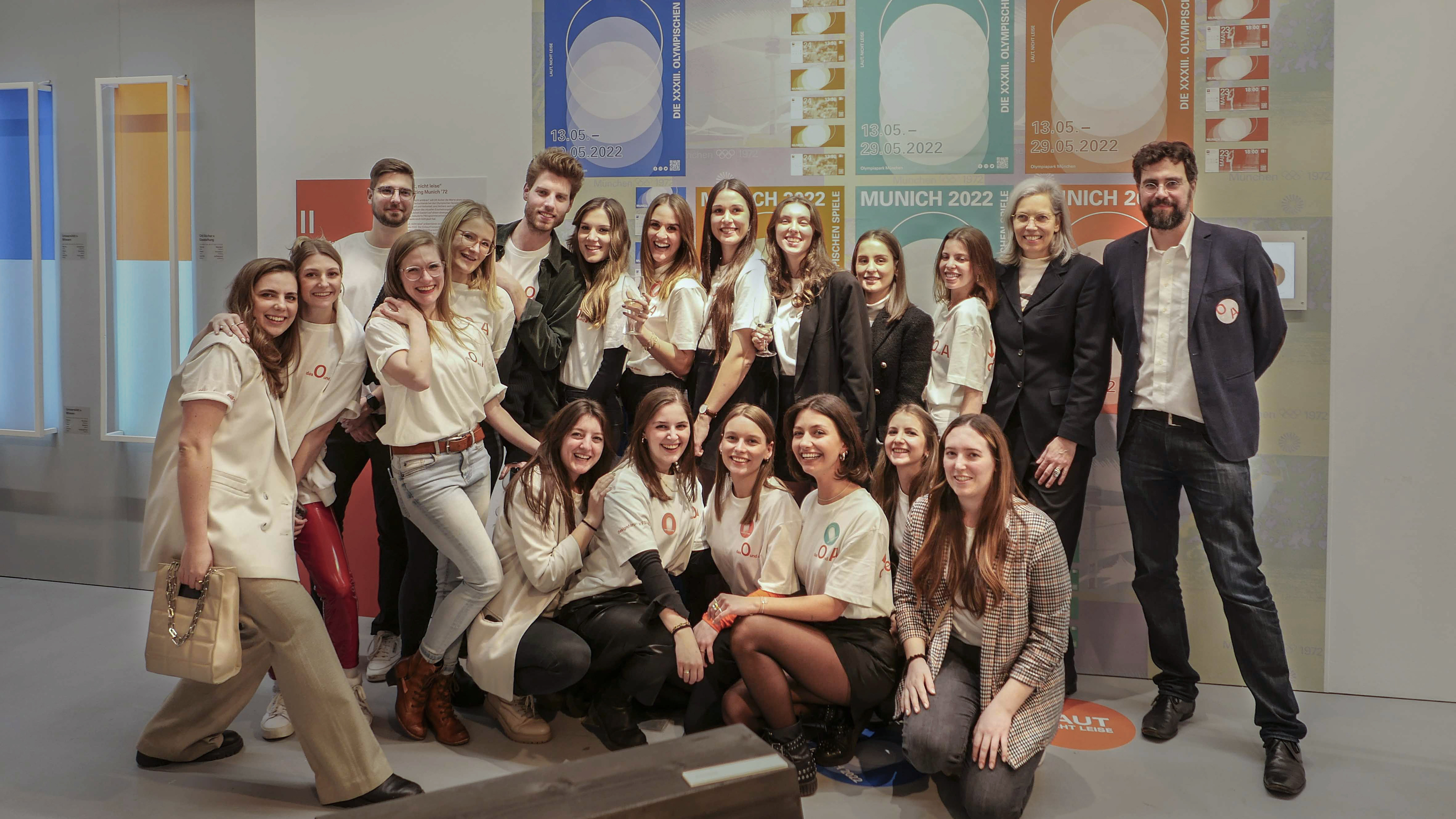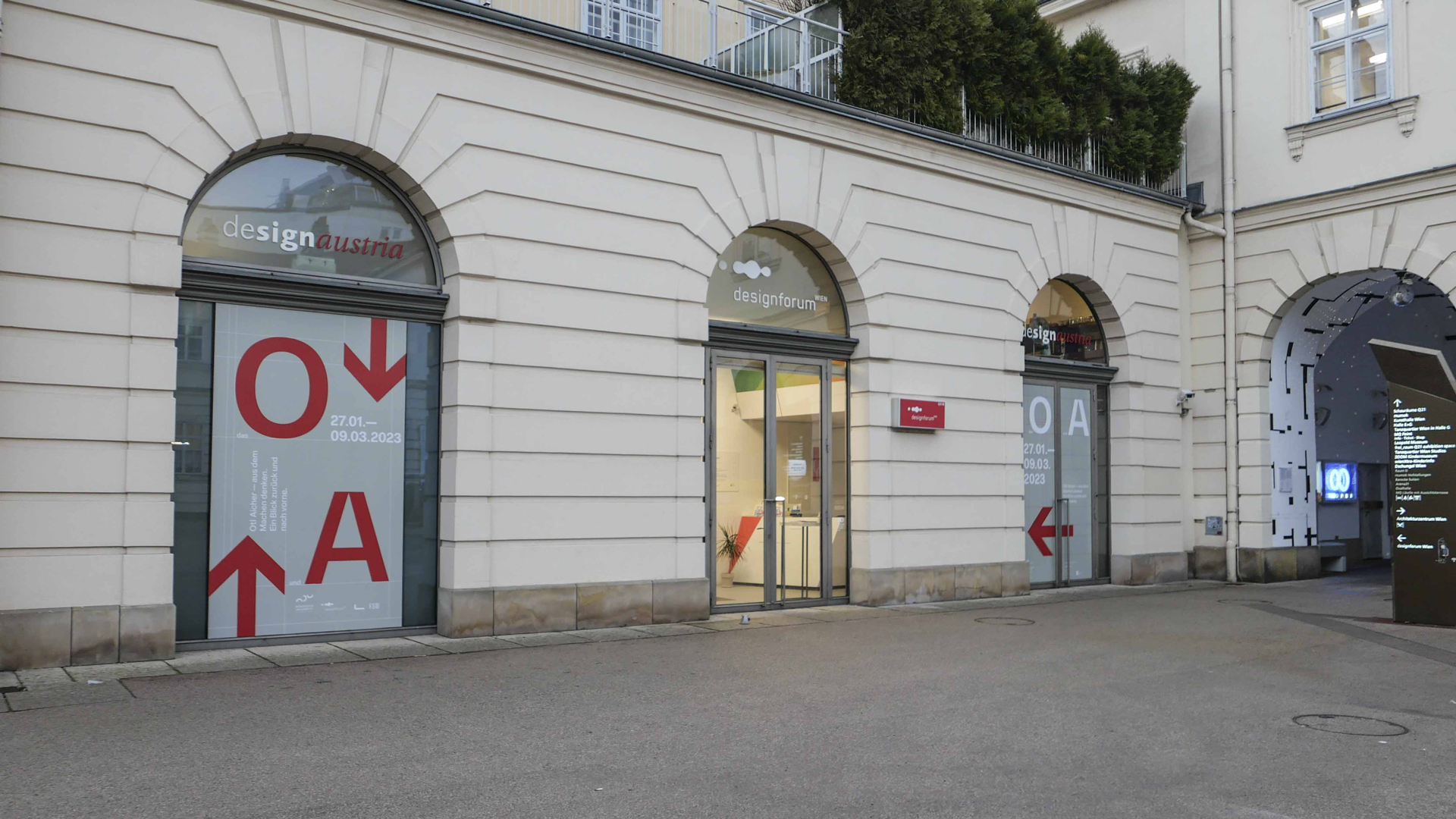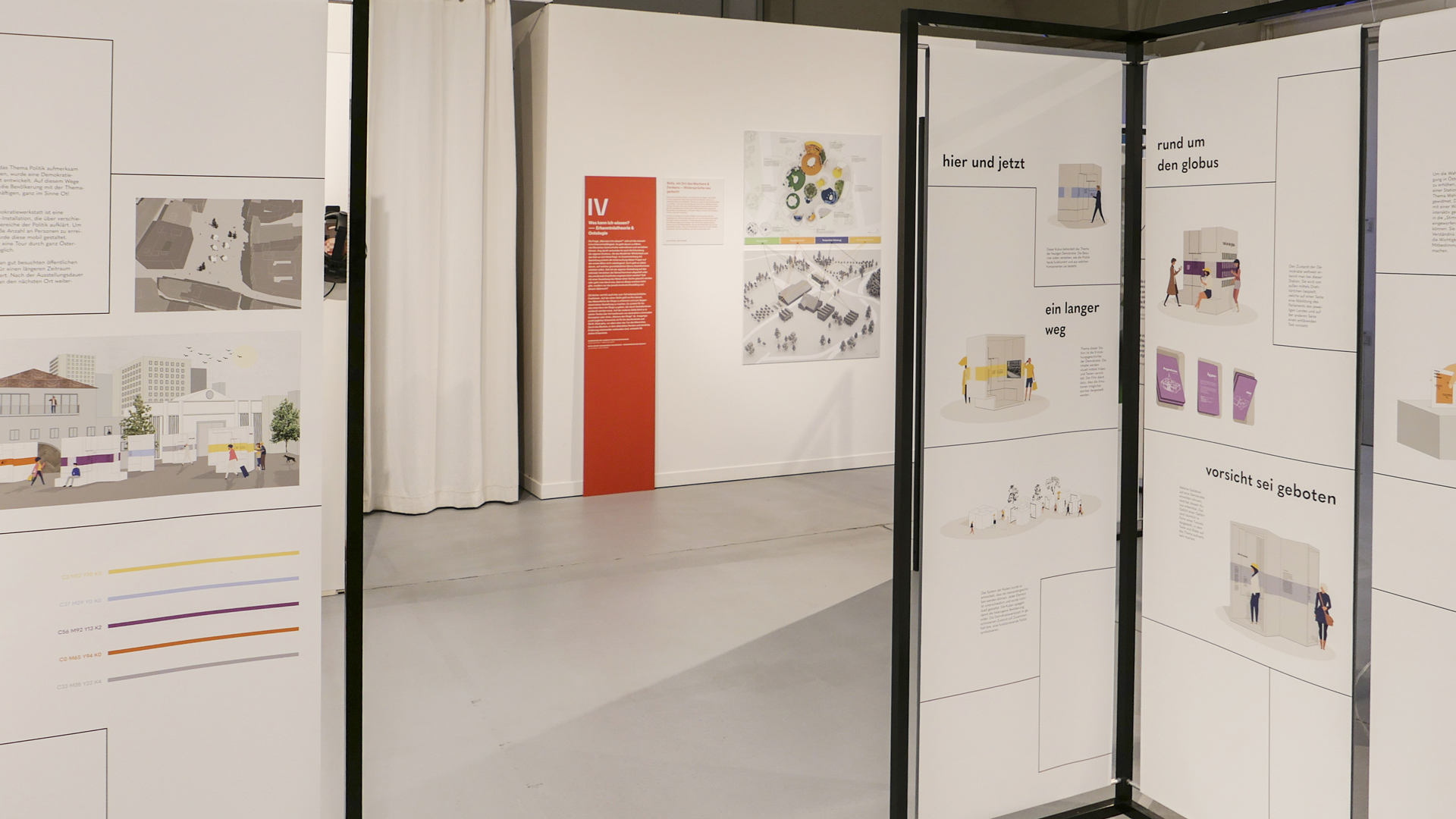New Design University St. Pölten
Master’s degree in Interior Design & Visual Communication

An O and an A. Otl Aicher – Deeds into Thoughts.
Looking Both Back and Ahead.
Otl Aicher understood “the world as draft”. For him the world was something that has to be actively and consciously fashioned by ourselves and only actually comes to be through active doing. It was for this reason that he sought to shift the priority accorded abstract theoretical thinking back to the acts of doing and shaping. He postulated deriving “thinking from doing” and, indeed, perceived this as being the fundamentally correct approach to design and design theory. Given a world beset by a whole raft of problems requiring urgent action, his was thus a highly topical response and it is this that makes it worthwhile continuing to apply our minds to Otl Aicher’s way of thinking.
Master’s degree students in Interior Design & Visual Communication at the New Design University St. Pölten accordingly set about organising an exhibition whose title translates as “An O and an A. Otl Aicher – Deeds into Thoughts. Looking Both Back and Ahead.” under the stewardship of Prof. Christine Schwaiger (architect) and Prof. Martin Düchs (architect & philosopher). Very much in the spirit of Otl Aicher, this was to be no mere act of retrospection and, indeed, was to primarily involve looking ahead. Students addressed various aspects of the pioneering luminary’s design philosophy and took them critically further forward in design projects of their own.
The exhibition ran in Vienna’s designforum from 27 January – 9 March. The relevance of Otl Aicher and his theories to present-day designers was additionally investigated, critically re-appraised, refined, either affirmed or refuted and, above all, discussed by said designers at a symposium held on 28 February.
Overall exhibition concept
The exhibition and individual projects evolved on the basis of the conviction held by Otl Aicher that – other than would be intuitively assumed – architecture and design not only have much in common with philosophy, they actually pursue the same objective, that of shaping the world. It would be possible to echo Otl Aicher (and Ludwig Wittgenstein, too, incidentally, a man whose work greatly influenced Otl Aicher) by positing design as being philosophy, though from the other side as it were – that of doing. If designers wish to fashion people’s environments in a way that is both meaningful and sustainable, then, like philosophers, they have also got to address themselves to basic issues of being human. “Philosophy and design converge on a common proposition. Philosophy in thought, design in deed. It states that our world is what we have caused it to be. The blueprints are ours, as is what has been made of them; it is the use that can be made of things that compels us to see how good or bad we are.” (Otl Aicher)
Unlike many philosophers, however, Otl Aicher accorded doing a certain degree of priority over thinking, whilst never failing to stress how intricately interrelated the two are. He called, in a sense, for thinking to arise out of doing and proceeded along these lines himself. The exhibition addresses the close correlation between design and philosophy and is sub-divided to reflect fundamental philosophical issues.
An introductory section is followed by four areas to be considered:
How must I act? – Ethics
What can I know? / What exists? – Epistemology and Ontology
What is beauty? – Aesthetics
What can I hope for? – Metaphysics
The students’ individual projects are assigned to one of these four areas and apply critical further thought to a given aspect of relevance to Otl Aicher that finds expression in items of the students’ own making. The teaching team consisted of Martin Düchs & Christine Schwaiger (overall concept), Vali Köllner (graphics), Nadia-Rapp-Wimberger (curatorial studies), Birgit Schulz (light design), Philipp Krummel (exhibition practice).
How must I act? – Ethics
Otl Aicher’s “philosophy of doing” departs from the premiss that, as well as being equal in status, the acts of thinking and doing, theory and practice, are actually interdependent. But he feels an imbalance has come about between doing and thinking in modern society. He argues that the practical dimension has become neglected: pure thought devoid of a practical bearing will not be able to solve humanity’s problems. This is an epistemological, but above all a moral dilemma for Aicher. He grasps “the world as draft”, i.e. as something that requires shaping. Thus, the question “How must I act?” is of fundamental importance not only to moral philosophers but also to designers.
Design and philosophy become directly intermeshed here. Aicher’s philosophical deliberations also constitute an induction into how to design, draft and develop in a morally correct manner. He aspires to this applying to one’s own life, to interactions with others, as well as to Nature, to commonplace objects, to issues of accommodation and even to “correct thinking”. Design is primarily meant to be of service to the practical sphere and to the ways people live; aesthetics as such are of no interest to him.
The ability to produce correct drafts and designs is predicated upon one taking action and making conscientious judgments.
What is beauty? – Aesthetics
The question “What is beauty?” is central to aesthetics. Otl Aicher nevertheless dismissed it as being irrelevant. Beauty is not a criterion for successful design in his view. He was loath to “win anyone over” with what was visually pleasing, preferring to persuade them with reference to use, function and material. Only in this way can items drafted and designed gain their independence as opposed to being exploited for political or economical purposes.
Aicher’s reservations about beauty and visual allure are understandable given his experience of the sledgehammer aesthetics favoured by Nazi propaganda.
And yet a brief perusal of his own work suffices to arraign him on a charge of self-deception.
His creative outpourings, from his posters for the Ulm adult education centre and his design work for the Munich Games through to later contributions for the likes of FSB are, amongst many other things, also good-looking.
What can I hope for? – Metaphysics
The question “What can I hope for?” is what underpins the philosophical field of metaphysics. Involved here are issues that go beyond (meta) that which can be explained by natural means (physis). This includes questions of religion and whether there is a God and/or a world hereafter. Metaphysical issues were of great importance to Otl Aicher throughout his life. In this respect, too, he was always probing; though he did embrace a religious heritage, he remained as much a free thinker on issues of faith as he did in so many other spheres.
He was raised a Catholic and essentially remained one all his life. But he questioned religious tenets even as an adolescent and arrived at an independent set of convictions by studying theology intensively off his own back. He subsequently continued to mull over questions of faith in discussions with other thinkers. It can be elicited from the little he uttered on metaphysical topics that he evolved a kind of Catholic individualism with the passing of time and here, as in so many respects, managed to reconcile the seemingly contradictory.
Still today there is a readiness to address issues of faith – one’s own and those of others. Otl Aicher’s attitude, thoughts and deeds can serve as a role model here.
What can I know? – Epistemology and Ontology
The question “What can I know?” targets humanity’s capacity for cognition. Epistemology seeks to clarify how we perceive and grasp factual situations. This is closely bound up with investigations into one’s own existence that call models of reality and being itself into question. Looking into such issues does not, at first glance, appear to be a particularly pressing concern in the context of design. But they do impinge on how designers should basically pitch their work. Should they adapt their designs to the beholder’s reason or appeal to his or her emotions?
Is design meant to reveal the essence of a thing or is it assumed that this is non-existent anyway and that the concrete individual object and the use to which it is put are all there is to go on? Here, too, Otl Aicher adopts positions that are occasionally contradictory. On the one hand he is intent on identifying the essence of things and make it the object of his design. He does, therefore, seem to believe in there being a core to things that designers need to pinpoint. On the other hand, though, he refutes the existence of abstract universal concepts or of an “essence to things” in his texts.
The point of departure for any act of cognition, he argues, is that which is concrete and non-abstract, and most notably that which people do. Cognition, Aicher feels, is engendered by the act of doing, a process in which abstract thought and sensuous experience are intertwined.
Project results
A look at the accompanying booklet
About the NDU
The Interior Design & Visual Communication course examines means of communication in architecture together with the spatial potential inherent in visual communication and the associated scope for designing in a socially minded manner. The New Design University St. Pölten (NDU) was set up by the Lower Austrian Chamber of Commerce in 2004 as a venue for international encounters and life-based training in the field of design.
The NDU is a university specialising in the fields of Design, Technology and Commerce that trains creative designers devoted to driving change in various areas of society who are already grappling with future developments today.
















































